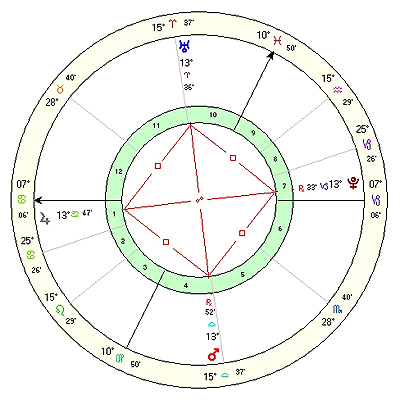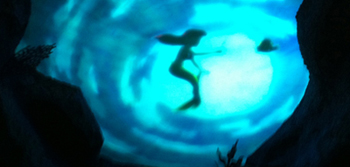2014 began with a cardinal Grand Cross, which tightens its grip into almost-exact alignment on April 22. A Grand Cross is essentially a crossroads, a decision point. Where are we going from here? Where are you going from here?
While the components of this powerful Grand Cross include the ongoing Uranus-Pluto square, Jupiter and Mars, I want to focus on Mars for now. Mars is currently retrograde in the sign of Libra, and will remain retrograde until May 19.
As part of this cardinal Grand Cross – with “cardinal” emphasizing acting, initiating, moving, getting things going – Mars, the planet of action, plays a particularly important role when it comes to decision-making. Mars is the blood that moves the body. When you make a move at this crossroads, Mars gets you moving. Mars retrograde in Libra, then – the sign of the scales, balance, and the careful weighing of options before any decision is made – is in no hurry to move forward or take action without giving this important decision considerable thought. This point is emphasized by Saturn’s current retrograde in Mars-ruled Scorpio, and by Pluto’s upcoming retrograde in Saturn-ruled Capricorn. (The chronological lineup of these retrogrades as they apply to the Grand Cross is stunning.) Important decisions take time, and the planets are offering us some time.
While the complexities of the Grand Cross make it impossible to address the breadth and depth of individual choices in a blog, it’s worth noting that in the ancient Greek world, when one encountered a crossroads one simultaneously encountered Hermes, the guide of souls, the Trickster god of the crossroads. At a crossroads, Hermes guides the way. We know Hermes as Mercury, and associate him with communication, thinking, the intellect, and the mind.
An amoral god, ethically indifferent, Hermes does not point you in the rational direction (or the irrational direction), or the morally-correct direction prescribed by culture or society or religion. Hermes points you in the direction that’s right for you, right for your soul, regardless. What is right for you might not be right for someone else, and what is right for someone else – even if that person is highly successful – might be completely wrong for you. It’s tricky.
Western culture usually considers the mind to be rational (if only we can quiet it first!), and often considers the heart to be more of a trickster, untrustworthy, misleading and misguiding us with its errant emotions that often don’t guarantee the secure outcomes we like to imagine (i.e., “happy ever after”). As archetypes, though – patterns not bound by time but incarnated in time, patterns that sustain their meaning across time, from the ancient world into modern culture – we can recognize the importance of Hermes at a crossroads, and consider that the Hermes "mind" approaching a choice is not actually the rational mind – it’s a mind in league with the heart. Thus, it intuits with uncanny precision into the unknown. Steve Jobs knew something of this when he said, “Have the courage to follow your heart and intuition. They somehow already know what you truly want to become. Everything else is secondary.” Hermes seems to know what your heart wants when he guides the way. He doesn’t leave the heart or the soul behind. I suspect the ongoing sequence of retrograde planets is slowing each of us down, in our own way, to connect more fully or more deeply with the heart.
Acclaimed American poet Wendell Berry puts this in proper perspective as well, appropriate for this juncture of the crossroads:
“... when we choose the way by which our only life is lived, we choose and do not know what we have chosen, for this is the heart’s choice, not the mind’s; to be true to the heart’s one choice is the long labor of the mind.”
The mind might flit back and forth wondering which decision to make, baffled as to which decision is the right decision, which direction is the right direction. Meanwhile, the heart knows, whether it makes any sense or not. Uranus in Aries isn’t asking for everything to make sense anyway. It’s like the character Will in the movie “Good Will Hunting.” Presented with the guarantees his brilliant mind would bring him in terms of job security and a future of financial abundance, he turned it all down and got in his car and drove away. Why? He had to “go see about a girl.” He had to follow his heart.
Essentially, the "heart's one choice" that Berry refers to is, as far as I can tell, the choice to live the life you were born to live, the life represented astrologically, symbolically and archetypally by your birth chart. It's the choice to live true to the pattern set forth from the start, the pattern that animates, excites, energizes, depresses, frustrates and thrills you, brings you to life and brings life to you as you live it. At this crossroads juncture, the choice is yours.








